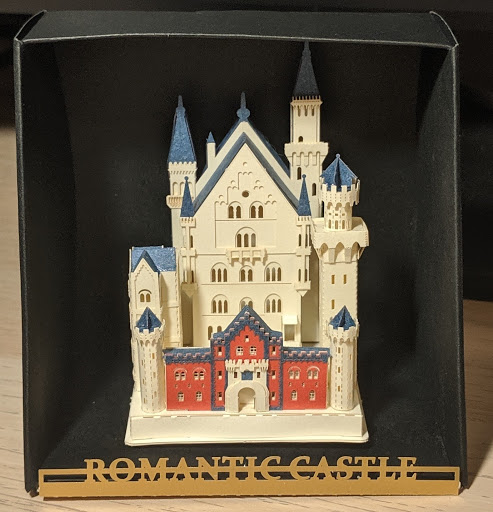How did you become interested in cellular agriculture?
It was a long road, I went through my undergrad as a mechanical engineering major. I enjoyed what I did, but I was always looking for something that really excited me and would have a significant impact. In my searches for something to do after I graduated, I heard of cellular agriculture. One of my advisors was excited about 3D printing a steak, so we sat down and had some talks. I got to interview a lot of people in the food industry and within food startups. I liked the idea, but what was most exciting was the feeling of community in the field, especially within New Harvest. With something this interdisciplinary, it’s really important to be able to collaborate. In the first couple meetings I have had as a New Harvest fellow, I’ve noticed an amazing sense of community. Helping each other is huge. In all of the other fields I have been a part of, that level of collaboration does not exist—it was more a feeling of high level competition that drowns out the push for scientific achievement.
“In the first couple meetings I have had as a New Harvest fellow, I’ve noticed an amazing sense of community.”
How did you hear of NH and what made you want to get involved?
My advisor had gone to the Good Food Institute Conference and I heard of New Harvest when looking at the suggested funding sources from the conference.
What was the moment that most influenced you to pursue cellular agriculture?
My institution was in the process of pursuing an ERC (engineering resource center) for NSF, which gave me direct access to a lot of information. It’s a collaboration between University of Nebraska and a handful of other universities like Purdue, University of Connecticut, University of Arkansas, Georgia Tech. The whole point of the ERC is to advance food manufacturing and to create some novel methods for alternative protein production. I became very excited about being a part of this, especially at its infancy. Over the course of learning about it, I became excited about the ability to impact the research and talk to people about it. One of my favorite things is talking to people because understanding where people stand with respect to implementing something new—especially the general public—is an important and always interesting conversation to have. It’s a very complex and multidisciplinary situation and I’m a big people person. Something like this, that is so collaborative, is the ultimate challenge.
I understand you come from an engineering background. How has this shaped your approach to cell ag vs the more traditional route of tissue engineering?
I think it helps me because my sights aren’t as narrowed. Sometimes it takes a person “from the outside” to push boundaries and ask some questions that may not be directly obvious. I work a lot with people who work in tissue engineering and deal with biomedical engineering applications. To be able to go back and forth and bounce ideas off each other is a huge part in the process. It’s really important to have this insight because if we are going to build meat, you need to understand not only the biological aspect, but also the customer experience. If you don’t have a sound knowledge of how to test that or what you are looking for and how to improve it, it’s a really daunting task for someone who may not have the experience in mechanical engineering or manufacturing.
Meat production is one of the largest industries in Nebraska, has this impacted your research at the University of Nebraska-Lincoln?
Yes. One of the biggest hurdles is how to go about collaborating with the meat science department. A lot of the early arguments for cellular agriculture or clean meat is how it will completely replace meat and be cleaner or more efficient. That puts a negative light on meat science. We are trying to take a step back and reassure that portion of the industry that we are not trying to take over. It’s more about creating a new method that will help in supplying these products. It’s been really interesting to see other people’s points of view.
“We are trying to take a step back and reassure that portion of the industry that we are not trying to take over. It’s more about creating a new method that will help in supplying these products.
Could you briefly explain your research and how you are using it to advance cellular agriculture?
My research is about creating hydrogel structures for which you can control the mechanical properties. A lot of research is on bioreactor design and improving cell culture. I am specifically focused on understanding those mechanical properties, especially over time. When you are culturing on a scaffold, it can potentially degrade over the course of the culture period. Right now, there isn’t a defined understanding of the impact cell culture has on the mechanical properties of a scaffold. My research is heavily based on testing that, as well as providing a method for creating these scaffolds such that you can tune the mechanical properties from the very beginning. These scaffolds will be used in growing the cultured cells that eventually make meat.
Why is cellular agriculture important for you personally? How has this influenced your lifestyle?
I grew up in a small town in Nebraska where the stench of manure from feedlots was known as the smell of money. Nebraska is known for good steak and good corn. When you grow up around this message that meat and animal farming is the livelihood of a lot of people, you don’t often think – how could this be better? At first I was on the fence about the idea. I knew if it were to completely take over the meat industry, a lot of personal connections would feel the impact of that. I am big on climate change and not a fan of animal slaughter, but the biggest thing for me is to understand the best system for all involved. That is really the biggest hurdle for cellular agriculture to be widely accepted. We need this research because it’s important to advance meat production to have higher capability before we hit a crisis, not after we feel the effects. On the lifestyle side, I have definitely been more experimental with vegan and vegetarian foods since this journey has begun. I know I will be one of the early adopters of cell-based meat.
“We need this research because it’s important to advance meat production to have higher capability before we hit a crisis, not after we feel the effects.”
Who is one of your role models and what do you admire in that person?
My biggest role model is my advisor Dr. Michael Sealy. He is multifaceted—he understands how a team should be run and values achievement as well as people. That has driven me because I am a people person. I am very much about collaboration, so seeing him model that has been really big for me. It’s that idea of showing that you care and respect someone as an equal while being able to nurture. When you are in a position such as him, you have the opportunity to make a really big impact on people, especially students and what they plan to achieve in the long run.
What is something unique about you that most people may not know?
I love building tiny replicas of famous architecture. It’s one of my secret passions! I have a couple of different sets that are made from tiny paper. I have one of the Neuschwanstein Castle in Germany and it fits in the palm of your hand…it’s super cool. I also have Notre Dame. Those are my two favorites, and two of my biggest bucket list travel destinations. Currently they are on my shelf.

What most excites you about being a research fellow at New Harvest?
There are three main things. Collaboration, communication, and creation. Collaboration in being a part of a community. Communication because I get to be a part of this movement, talking to people and selling the idea. Creation to be able to physically create something that will hopefully inform those who come after me in trying to solve this problem.
This article was written by New Harvest volunteer Kyrin Pollock.
To stay up to date on New Harvest research updates and events, sign up for our newsletter.


